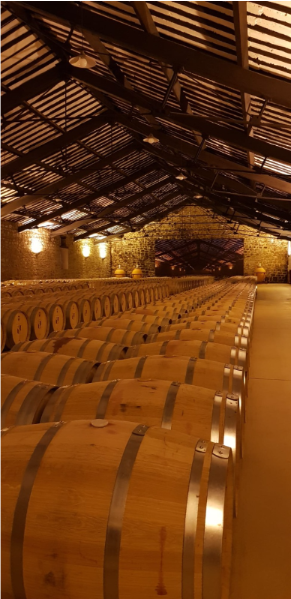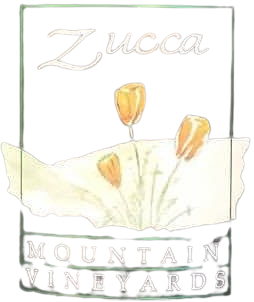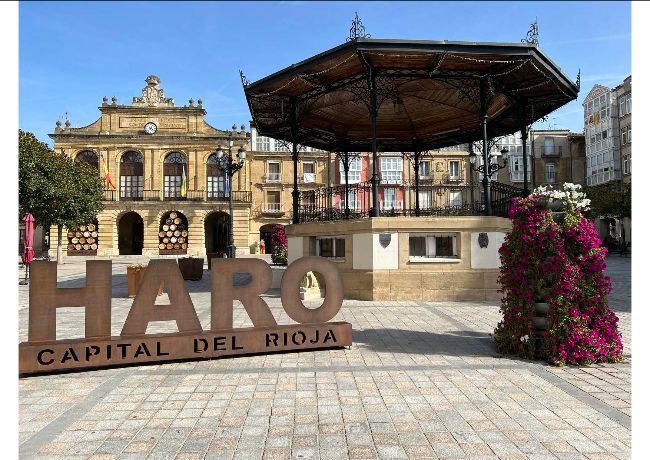
Gary’s comments
Our first visit to the La Rioja DOC wine region and Haro, the self-proclaimed CAPITAL DEL RIOJA.. Our last two newsletters commented on our ventures to Priorat, the wine region north of Valencia. We first stayed in Tarragona, on the Mediterranean coast and took day trips to the wineries. On the second trip we stayed in the small village of Vilella Baixa and either walked or took a taxi to the wineries. This trip we decided to revisit La Rioja, the only Spanish wine region other than Priorat that can use the DOC classification. Located in the Ebro river valley to the northwest of Priorat and south of the Atlantic coast city of Bilbao, the Rioja wine region is much larger than Priorat and has several very large distributors. We were drawn to this region for a couple of reasons. First, we have fond memories of the area from previous visits on our wine club tours. Second, our go-to-everyday wine, Cune, is produced in Haro, the self-proclaimed capitol of Rioja.

The trip
Our favorite way to travel in Europe is by train. The train system in Spain is great if you want to travel to cities along the Mediterranean coast or from Madrid to almost anywhere. However, if you want to go from Valencia to a place across the country like Rioja it is way more complicated and takes way more time. For this reason we took a plane to Bilbao, a city on Spain’s Gulf of Biscay coast, and a train from Bilbao to Haro. Between taxis to airports and train stations and waiting for planes and trains, it was about an 8-hour trip. When we arrived in Haro about five PM, we expected to take a taxi from the train station to our Airbnb. We were very surprised to find that the train station was closed, and we were the only people on the platform. Actually, we were the only people anywhere in sight. The train station is right in the middle of the industrial area where the wineries are, and everything was closed for the day. We checked with our travel advisor, Señor Google, and found that our hotel was only about a mile away on the other side of the Ebro river. So we started towing our suitcases down the road. We got about 200 yards (0.18 km) when a guy driving a carryall stopped by and asked where we were going. Turns out he was a local winery owner on his way home. He gave us a ride to our hotel and a tour of his winery the next day. What a great reception after a lousy trip!
The city
Haro is a small city that isn’t afraid to make fun of itself by claiming the title of the CAPITAL DEL RIOJA, the largest and most prestigious wine region in Spain. Below are a couple of images that might illustrate my point. The top one is a mural of some guys who have probably had a bit too much wine while two women studiously ignore them. Below that is a wall depicting a huge wine bota fight.
The more serious art is also wine focused. The town is full of this type of art. The two examples below were taken within a two block area. Here a cooper works on making a barrel, and a wine bota maker shows his wares and raw materials.

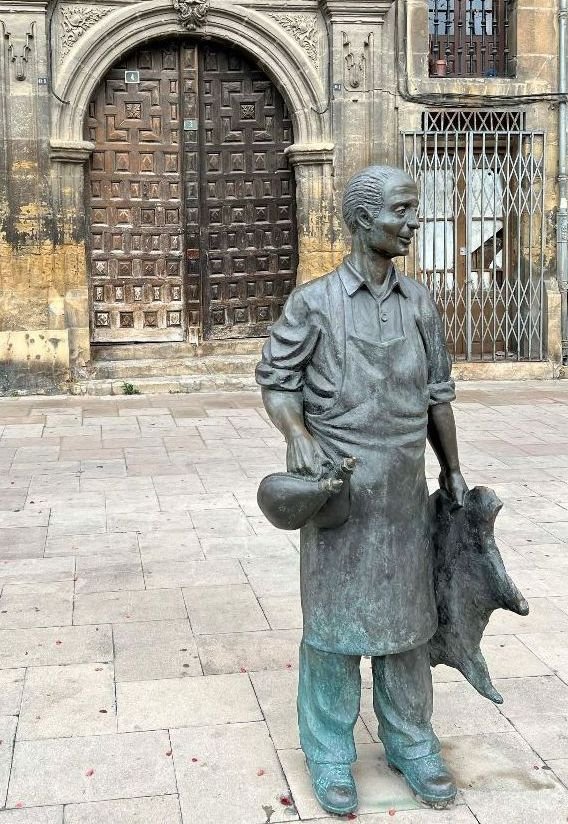
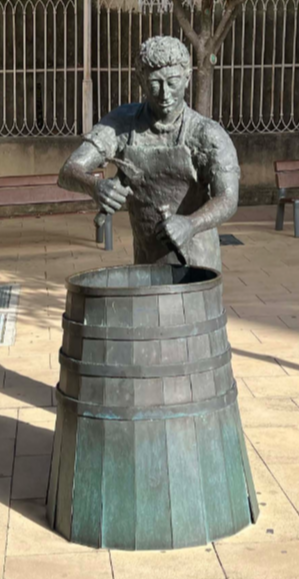
The wines
History
All the major wineries of Haro are clustered together around the train station on the other side of the Ebro river from the town, and there is an interesting reason for this. While wine was make in the Haro region for centuries, premium wines were made in the Bordeaux region of France. However, in the later part of the 19th century, the vineyards in Bordeaux were wiped out by a root louse called Phylloxera, and the Bordeaux winemakers found that the Spanish grapes were resistant to this disease. Also, there was a train that ran from Haro to Bordeaux where there were many large wine distributors.
Wine classifications
The differ slightly from other regions of Spain, but generally follow the EU classifications and contain four elements, Region, Aging, Vintage, and Time in oak. Region has two classifications, DO and DOC. There are 70 DO regions in Spain. These are regions that have produced higher quality wines according to government standards. There are two DOC regions, Rioja and Priorat. These regions have a longer history of making quality wines and have to meet higher government standards. Although there are lower classifications for aging and oak treatment, Crianza is the lowest classification for premium wine. To earn a Crianza classification, Rioja wines must have aged for a minimum of two years, with six months in oak. Reservas must have aged for at least three years, with twelve months in oak. Gran Researvas must age for five years, with 18 months in oak. Please note that my classification standards are abbreviated and limited to red wines only. For more info on reading Spanish wine labels, check the How to read a Spanish wine label reference below.
Cune wines
Our go-to, everyday wine is named Cune. It is a DOC wine made from 85%Tempranillo and 15% Garnacha Tinta and Mazuelo grapes and priced at about 6 Euro (7.15 USD). Cune is produced by CVNE or Compañía Vinícola del Norte de España. We like this wine because, being aged for only 12 months, it maintains the fruit character more than some Reserva or Gran Reserva wines. We also like Cune because it has a wine cellar designed by Gustave Eiffel. His steel truss roof design allows more floor space for wine storage because it doesn’t require posts to support the roof. He used the same design for his Paris tower. In my opinion, his cellar was put to a better use than his tower. Check the image below and see if you agree.
